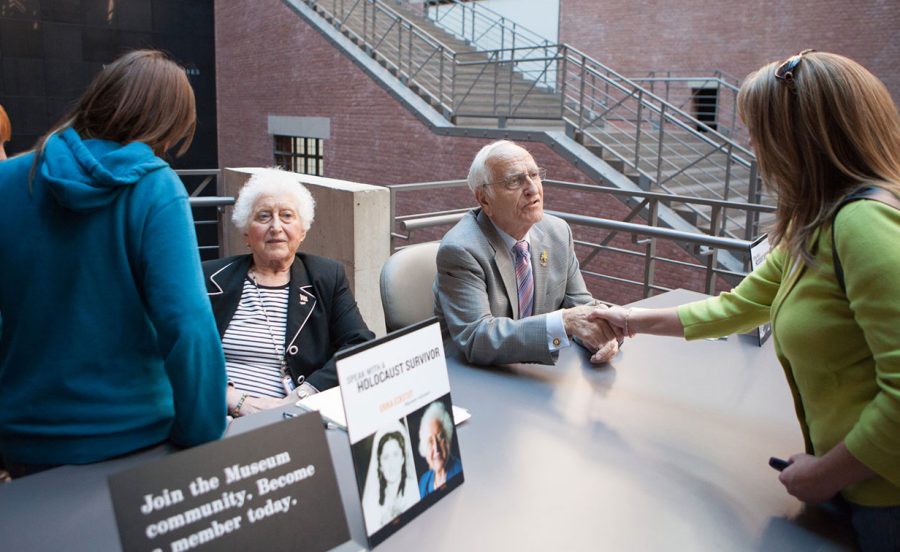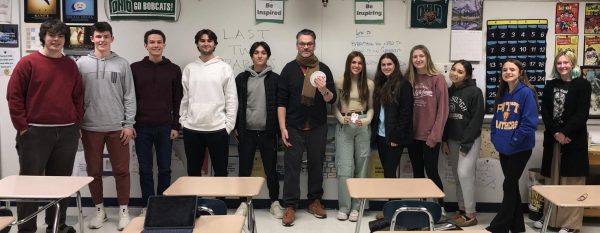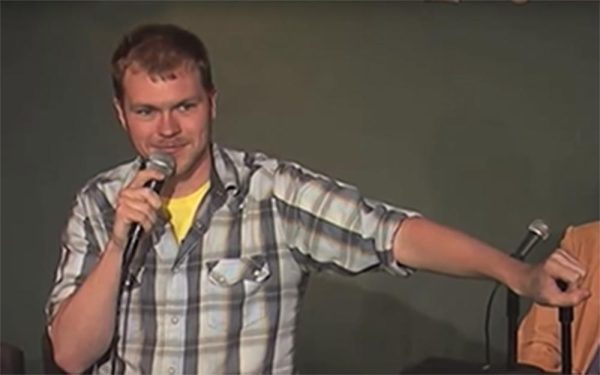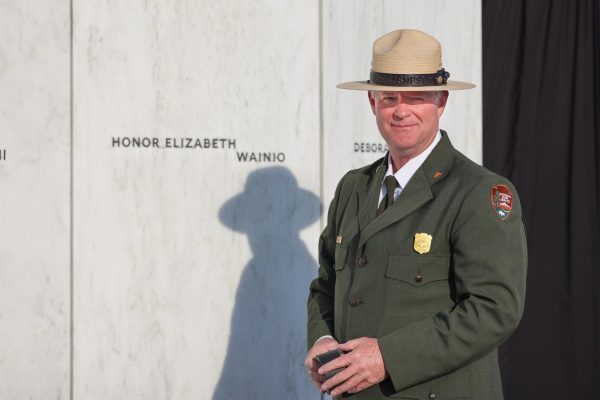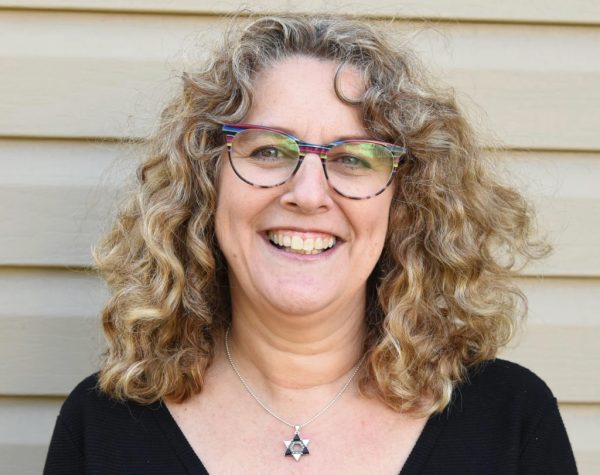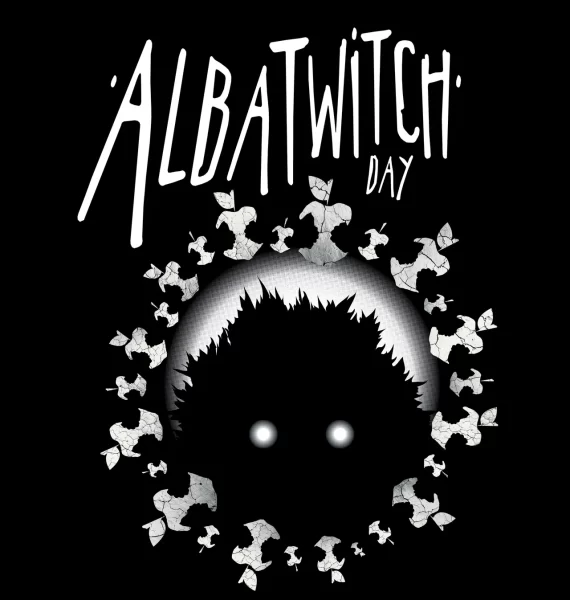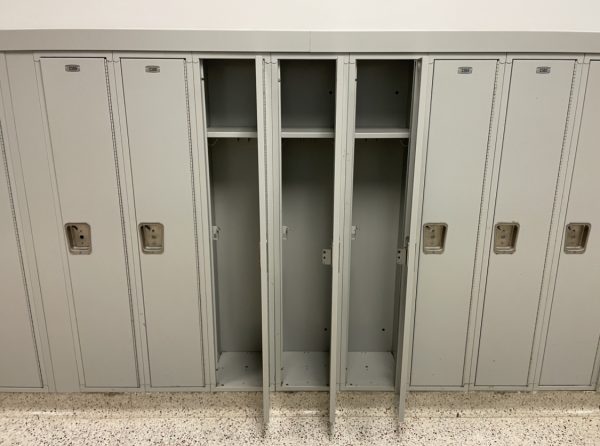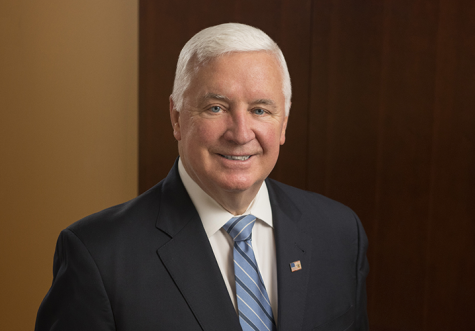As Holocaust survivors pass away, their legacies and lessons live on
United States Holocaust Memorial Museum
Holocaust survivors meet guests at the United States Holocaust Memorial Museum in Washington DC.
Teachers who are involved in lessons about the Holocaust have had access to remarkable resources to lean on to help support their lessons: survivors of the Holocaust.
But, as Holocaust survivors continue to age and eventually pass away, the stories and lessons of the Holocaust have been taught differently, leaving the survivors’ legacies in the hands of younger generations. This presents a dilemma of how stories are shared and taught when survivors no longer can do so themselves.
Though this issue has hit us much harder in the last few years due to the COVID-19 pandemic, it has been an issue that many have known was coming. Mr. Nick Haberman, who used to teach a Holocaust class and is the leader of the LIGHT (Learning through Innovation in Genocide and Human rights Teaching) initiative, spoke about an interaction he had with Holocaust survivor Jack Sittsamer following his cancer diagnosis after he had given a presentation to Shaler Area students.
“The first [Holocaust survivor] I brought in was Jack Sittsamer…as soon as he gave his presentation, I said ‘You have to come back,’ and his response was, ‘I’m going to die soon, and when I do it’s up to you to tell my story.’…He died not many months after that statement. He knew he had cancer, he knew he was trying to speak to as many people as possible before he died,” Mr. Haberman said.
The first [Holocaust survivor] I brought in was Jack Sittsamer…as soon as he gave his presentation, I said ‘You have to come back,’ and his response was, ‘I’m going to die soon, and when I do it’s up to you to tell my story.’
— Mr. Nick Haberman
As we begin to understand just how rapidly the generation of the Holocaust is being lost, it’s important to start looking for new ways to teach about the genocide. There must be a collective acknowledgement that it is up to younger generations to preserve that history and to continue to teach the stories of this genocide.
Mr. Haberman noted he felt incapable of teaching about these crimes on humanity without heavily relying on bringing survivors when he first started teaching the Holocaust class. Shaler Area residents were lucky to be in Pittsburgh which allowed for easy accessibility to people with first hand experience who would visit the district and give presentations.
Mr. Haberman talked about how other Holocaust teachers from across the country and even the world were almost never afforded access to Holocaust survivors.
“It’s rare for teachers to have the opportunity to connect a Holocaust survivor to their students or to meet a Holocaust survivor. But in Pittsburgh, when I started teaching, had at least sixty that you could choose from to bring in depending on what topic in the Holocaust you were teaching,” Mr. Haberman shared.
This is no longer the case as there are fewer and fewer survivors. In addition to this, we must consider the strain that comes with constantly telling stories of such a traumatic experience, regardless if it is for educational purposes or not. It is not fair to expect survivors to use the remaining part of their lives just to accommodate us.
“I kept bringing in survivors and then the story was the same, they kept passing away. I started to realize we really needed to change the way we teach about the Holocaust and also that it can’t just be about the Holocaust—the Holocaust is done and over with. What we need to do with the Holocaust is help people your age counter all forms of identity-based discrimination and hate,” Mr. Haberman said.
Be compassionate. Be kind. Take care of each other. Look after each other. Give back to your community. Those are the lessons I have learned from Holocaust survivors.
— Mr. Nick Haberman
It is important to first understand the main takeaway of survivor’s stories and how they apply to today’s stories. Everyone’s experience is different, but Mr. Haberman has noticed that there are a few recurring messages.
“The lesson that we take from all of our Holocaust survivor’s presentations is resistance and resilience. How important it is to stand up against things we know are wrong, even if people in charge tell us their right. And resilience—as bad as things get, we can face those challenges head on and we can respond in a way that is meaningful and positive to make those around us better, safer, more compassionate, kinder people, make our community more compassionate, safer,” Mr. Haberman said.
By framing education this way, students learn both the cruel history of genocide while also learning how to foster the traits that will stop the hateful acts we see in our world today as well as developing problem-solving skills for real-world scenarios.
“It is my hope that young people can learn from the lessons of the past so that they can construct a better present and future for the world. It’s what motivates me to teach and empower my students everyday,” Holocaust and multicultural studies teacher Mrs. Catlyn DiPasquale said.
Understanding the Holocaust, even as those who survived it are no longer around to share their stories, is still best learned by listening to the survivors. Their words push for progress in education, in our communities, and in us as human beings.
“Be compassionate. Be kind. Take care of each other. Look after each other. Give back to your community. Those are the lessons I have learned from Holocaust survivors and they have helped me connect very closely with the content because it has made me realize Holocaust survivors are just regular people. And so are the perpetrators who carried out the horrific acts. They’re all just regular people. This is the story of other people, and this school district has done a wonderful job of helping younger people to adopt stories that are very different from their own story,” Mr. Haberman stated.
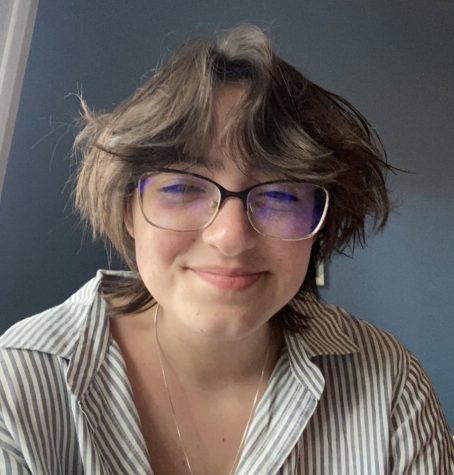
Hello, I’m Sarah! I also work with the Art National Honors Society when I am not writing. Outside of school, I adore watching horror movies, reading,...


